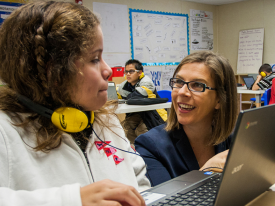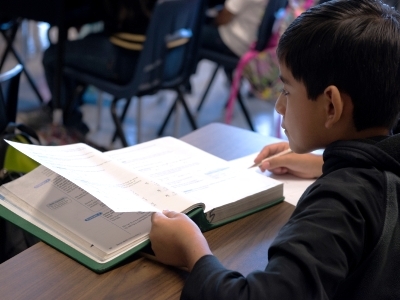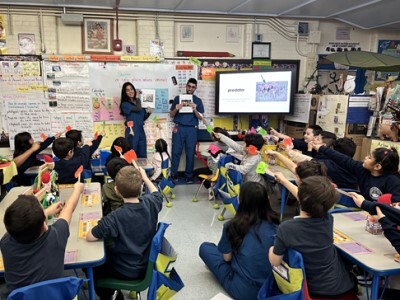Designing Schools that Generate Real Value for Vulnerable Students, Part 2
Topics

Together, educators are doing the reimagining and reinvention work necessary to make true educational equity possible. Student-centered learning advances equity when it values social and emotional growth alongside academic achievement, takes a cultural lens on strengths and competencies, and equips students with the power and skills to address injustice in their schools and communities.
Chris Sturgis walks through the final three of five missteps educators take when designing blended, personalized, proficiency-based schools, with advice for what to do differently.
What is preventing us from seeing more innovation and greater gains?
In my first post on this topic, I introduced five places we trip up when designing blended, personalized, proficiency-based schools—and what we need to do differently to make sure we generate real value for vulnerable students, and I discussed the first two. Here, I tackle three more:
3. We assume that what we put in place will work ––––––> Design for not yet proficient.
4. We act as if we can’t change attitudes and maturity of our student ––––––> Invest in maturation.
5. We are driven by only one half of the equation ––––––> Get smart about cost-effectiveness.
3. Not Yet Proficient
We assume that what we put in place will work: Design for not yet proficient.
Designers like to think their designs are perfect. But with that attitude, it’s way too easy to blame the students if we think we have the perfect system. What if we assumed that our systems were pretty good but that there would always be some kids for whom it didn’t work perfectly—then we’d have to design a second (and maybe a third loop) for “not yet proficient” (NYP).
Essentially we’d be integrating RTI (Response to Intervention) right into our operations. We’d be designing flex time into our daily, weekly, semester, and annual calendars for those students that are NYP. We’d be thinking about what types of experiences might capture a student’s passion or shed some relevance onto the subject. We just need to design with the understanding that our systems have to morph and flex to make sure students reach proficiency.
4. Invest in Maturation
We act as if we can’t change attitudes and maturity of our students: Invest in maturation.
Life experiences shape maturation in lots of ways—if students have a lot of wonderful experiences in life, they are likely to see themselves as having value and ability to shape their lives. But, if a student has traumatic experiences, it’s likely they are harboring anger, feeling defeated before they have even begun, or even showing signs of PTSD. We know that these feelings can cause a range of behaviors that get in the way of learning.
In conventional schools, we rely on special education or hope that giving lower grades because of behavior is somehow going to motivate students. However, there are many ways that schools can accelerate the maturation process. Students who have experienced trauma have a unique opportunity to grow and mature from positive experiences. Staff can be trained in trauma-informed care. School culture can reinforce relationships and safety. Experiences can be designed to build social-emotional learning. In fact, students can learn that their perseverance in the face of ongoing challenges is an asset that can help them in college and careers.
Competency-based schools have other tools as well. Emphasizing that mistakes are just part of learning defuses the shame and blame that often accompanies the A-F graded classroom. Re-assessments and multiple ways to demonstrate proficiency can reduce mind-numbing stress. Lifelong learning competencies can include concepts that allow students and staff to talk about how behaviors got in the way of learning and even personalize their plan to build up their lifelong learning behaviors.
5. Cost-Effectiveness
We are driven by only one half of the equation: Get smart about cost-effectiveness.
Academic achievement based on state assessments drives just about everything we do in schools. Costs are pre-determined by state and district budgets. With that context, there isn’t a lot to say about cost-effectiveness of our schooling models—and it’s holding us back.
In competency-based schools, the increased granularity from learning progressions show what students have learned (or not learned) within a given period. The power of this data is just beginning to be used. We can increase the rate of prototyping and rapid research. For example, we can determine if assigning the best math teacher to work with the most vulnerable students is a better strategy than having that same math teacher work with all the teachers to build their skills, looking at short-term and longer-term learning gains.
We aren’t going to be just thinking about effectiveness in terms of academic gains—we are going to be focused on the rate of learning. What is the cost if we want our most vulnerable students to learn at a rate of 1.5 levels per year? What if we invested in tutors? Adaptive software? More field visits to incredibly interesting workplaces? Which techniques are going to yield the greatest gains over three months, six months, or a year? This is just the beginning...it’s going to be a wild ride as we begin to generate the data we need to continuously improve how our schools serve our most vulnerable students.
In closing, I would say that, going forward, our focus on innovation is underestimating the role of districts and the changes they are going to have to go through over the next decade. The trend toward the decentralization of schooling—where students can enroll for competency recovery or a single course—is going to put more and more emphasis on districts to rethink how they measure achievement, school performance, and the services they offer to families and students.




